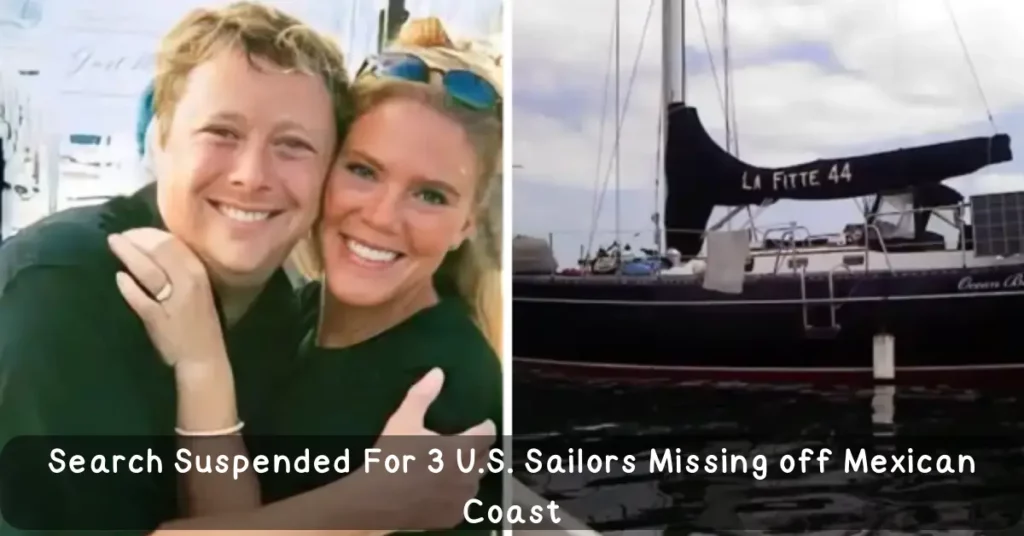The U.S. Coast Guard announced Wednesday that the search for three missing Americans off the coast of Mexico had been put on hold.
“An exhaustive search was conducted by our international search and rescue partner, Mexico, with the U.S. Coast Guard and Canada providing additional search assets,” Gregory Higgins, a Coast Guard commander, made a statement.
“SEMAR [The Mexican Navy] and U.S. Coast Guard assets worked hand-in-hand for all aspects of the case. Unfortunately, we found no evidence of the three Americans’ whereabouts or what might have happened. Our deepest sympathies go out to the families and friends of William Gross, Kerry O’Brien and Frank O’Brien.”
Despite spending “281 cumulative search hours covering approximately 200,057 square nautical miles, an area larger than the state of California, off Mexico’s northern Pacific coast with no sign of the missing sailing vessel or its passengers,” the Mexican Navy and Coast Guard reported.
Since April 4, Kerry O’Brien, Frank O’Brien, and Gross had not spoken with acquaintances, relatives, or maritime authorities.
The three attempted to sail their 41-foot sailboat from Mazatlán to San Diego when they most likely met “significant” weather and surf.
Kerry’s brother Mark Argall told ABC News, “When it started to reach into five, six, seven days and we started to get a little more concerned.”
Higgins had voiced worry that the weather in that area deteriorated around April 6, with swells and wind possibly producing waves as high as 20 feet.
The three were piloting a capable fiberglass sailboat of 41 feet, and other yachts of comparable size had successfully circled the globe.
The families of the missing Americans are unsure of the locations of their loved ones due to the lack of precise information about the sailors’ whereabouts, partly due to the absence of GPS tracking and the weak cellular connection close to the Baja peninsula.
Melissa Spicuzza, the daughter of Gross, said, “We have all been spinning our wheels about the different scenarios that could have happened.”
After the yacht underwent repairs close to Mazatlán, Mexico, Kerry and Frank O’Brien, a married couple, first chose to go to Mexico to sail a 41-foot LaFitte sailboat named “Ocean Bound” to San Diego, according to Argall.
Gross, a mechanic by trade and a veteran sailor with more than 50 years of experience was chosen by the couple to guide the boat from Mazatlán to San Diego.
Because of his prowess in fixing boats, Spicuzza said that friends of Gross would liken him to the fictitious 1980s television character and improvisational genius MacGyver.
“Whatever it takes, he’ll get it rigged up. He’ll get it working,” Spicuzza described.
According to the Coast Guard, the sailors’ slip, which functions as a boat parking space, was last used on April 2. Eventually, they left Mazatlán on April 4 according to Facebook posts and cellular activity.
If you want to see other recent news, you can click on the link given below:
- Grizzlies Grind Out Game 2 Win Over Lakers Without Ja Morant!
- Colorado Suspect Allegedly Planned Multiple School Shootings!
- US Supreme Court Hearing On Illegal Immigration Law!
The men calculated that it would take them two days to sail across the Gulf of California to Cabo San Lucas, where they intended to pick up supplies.
The Coast Guard, however, disputes that the sailors ever made a halt in Cabo San Lucas. Since April 4, neither the yacht nor any search and rescue teams have been contacted by marinas along the Baja Peninsula.
According to Higgins, the weather got worse around April 6, making navigation more difficult with winds of 30 knots, big surges, and waves.
Spicuzza stated that sailing from Mexico to California is tricky because sailors must travel against the wind and currents.
“From the tip of Baja all the way back up to Alaska, you’re going against wind and current, so it’s a more difficult, exhausting sail, but of course, doable with the experience that’s on board,” Spicuzza said.
Spicuzza remarked that the group’s initial 10-day itinerary was perhaps too ambitious. The voyage might take two and a half weeks if the sailors had to often tack, or, to put it another way, zigzag, to make headway against the wind and current.
According to the Coast Guard, the boat is also said to lack trackable GPS navigation, such as a satellite phone or a tracking beacon. It is challenging to triangulate the cell position in that part of Mexico due to the spotty availability of cellular service.
The 41-foot sailboat’s designer, Robert H. Perry, remarked that it was probably made in Taiwan 35 years ago. The fiberglass sailboat itself was an old-fashioned, ocean-going vessel.
Due to travel conditions, family members are unsure of their loved ones’ whereabouts. Spicuzza speculated that the radio silence might be because they are “just going to roll into San Diego like nothing happened in maybe about a week,” based on the timetable, and that it might be a technological problem.
As an alternative, the Coast Guard has been attempting to determine where their life raft would have drifted given the weather at the time.
“It’s just been a roller coaster of emotions the last several days; I want my dad home, I want him safe, [and] I want the O’Brien’s home safe,” Spicuzza said. “I’m very much looking forward to sitting around a table with all of them and joking about the time they got lost at sea – that is the hope.”
If you want to check out more news, you can visit our site, newswatchlist.com, to read all the latest information. You can also share your views in the comment box, and don’t forget to bookmark our site.
